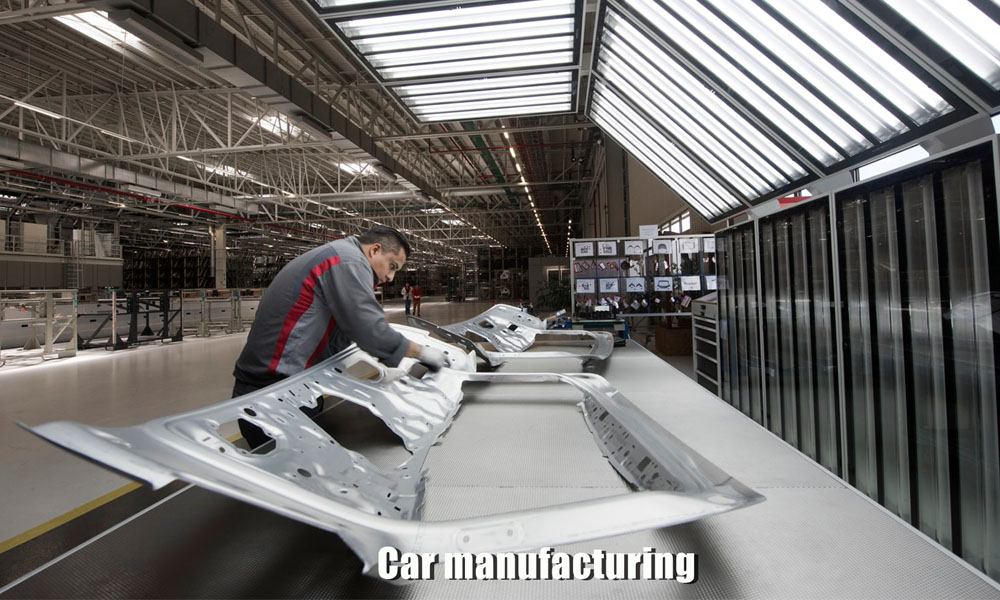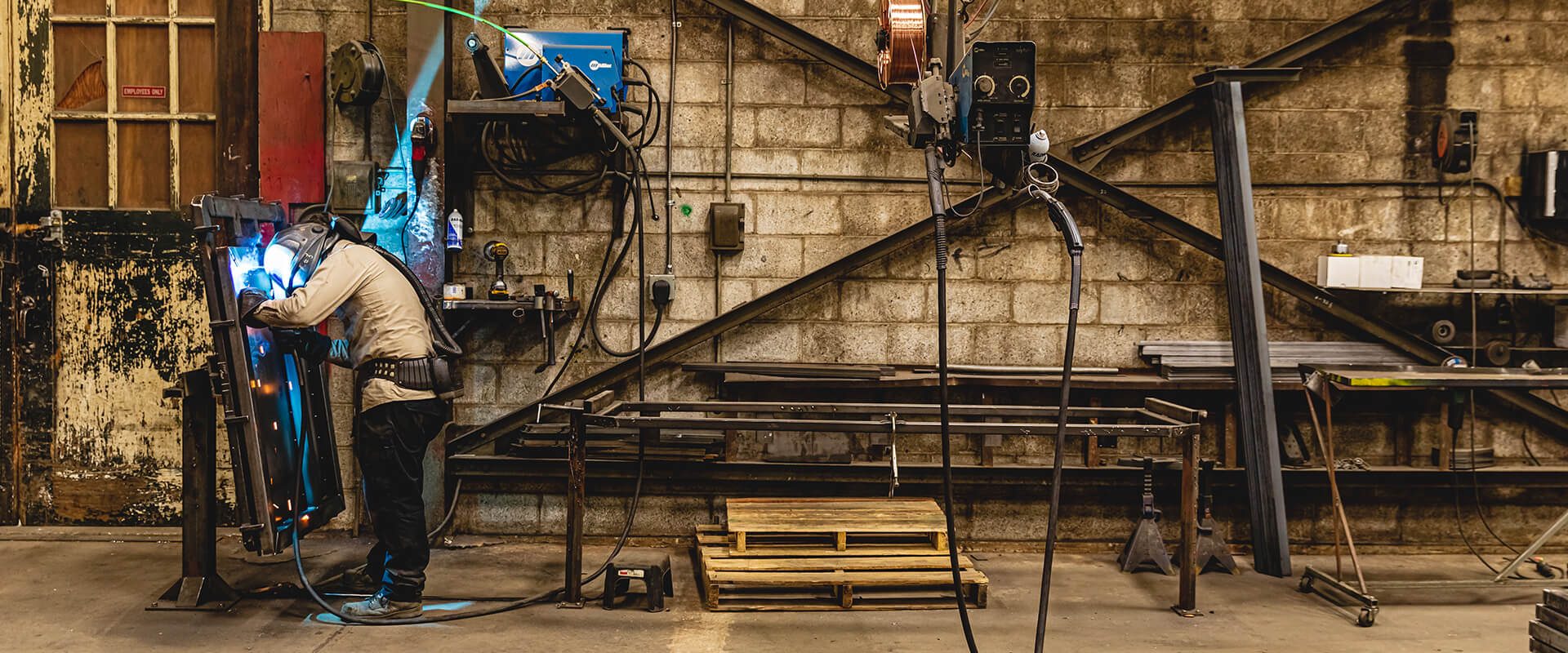Typical Welding Repair Work Issues and Exactly How to Address Them Effectively
Welding repair services frequently encounter a series of issues that can jeopardize the integrity of the end product. Typical issues consist of inadequate penetration, porosity, and imbalance, among others. Each defect offers one-of-a-kind difficulties that need specific methods for resolution. Recognizing these concerns is important for welders intending to boost their skills and outcomes. This discussion will certainly discover these common welding fixing issues and reliable methods to address them.
Inadequate Infiltration
Insufficient penetration takes place when the weld metal fails to completely fuse with the base material, resulting in weak joints and prospective architectural failings. This concern frequently stems from insufficient warm input, inaccurate electrode angle, or incorrect welding speed. Welders might run into insufficient penetration as a result of a miscalculation of the essential criteria for a specific product density or type. In addition, contamination on the base material's surface can impede effective bonding, aggravating the issue. To address insufficient infiltration, welders must guarantee appropriate settings on their devices and maintain a tidy job surface. Regular inspection of welds is advised to determine any type of deficiencies early, permitting timely adjustments and the avoidance of compromised architectural honesty in welded settings up.
Porosity
Porosity is a common problem in welded joints that shows up as little gas bubbles entraped within the weld steel. This flaw can endanger the integrity of the weld, resulting in minimized toughness and prospective failure under stress. Fabrication. Porosity commonly arises from contamination, moisture, or incorrect welding methods, which allow gases to get away right into the liquified weld pool. To resolve porosity, welders ought to ensure proper surface area prep work, preserve a clean functioning environment, and make use of appropriate welding criteria. In addition, selecting the right filler material and securing gas can reduce gas entrapment. Routine evaluation and testing of welds can aid recognize porosity early, ensuring prompt restorative actions are taken, thereby maintaining the high quality and reliability of the bonded structure
Imbalance
Misalignment in welding can occur from different variables, consisting of improper arrangement and thermal growth. Recognizing the origin is important for efficient resolution. A number of correction methods are readily available to realign elements and guarantee architectural integrity.
Causes of Imbalance
Welding imbalance often comes from a range of underlying concerns that can endanger architectural honesty. One main cause is inappropriate fit-up of components prior to welding, which can cause gaps and unequal surfaces. Variants in thermal expansion throughout the welding process can also lead to distortion, especially if the materials being signed up with have various coefficients of growth. Furthermore, insufficient securing and fixturing might fail to hold elements safely in place, leading to movement during welding. Improperly conserved equipment, consisting of welding equipments and devices, may introduce inconsistencies in the weld grain, additional adding to imbalance. Lastly, driver mistake, coming from inadequate training or experience, can also play a considerable duty in producing misaligned welds.
Modification Methods Available
Dealing with imbalance efficiently calls for a combination of rehabilitative strategies customized to the details problems at hand. One usual technique is making use of components or jigs to hold elements in the correct setting throughout welding, ensuring consistent positioning. In addition, pre-heating the products can assist minimize distortion and improve fit-up. For significant imbalance, mechanical realignment techniques, such as making use of hydraulic jacks or clamps, can be employed to deal with the placement prior to welding. Post-weld warmth treatment may additionally be required to alleviate stresses triggered by imbalance. Lastly, cautious inspection and modification during the setup phase can stop misalignment issues from coming to be substantial problems, promoting a smoother welding process and enhancing general architectural integrity.
Distortion
Distortion is a typical challenge in welding that can arise from numerous factors, consisting of irregular heating & cooling. Recognizing the reasons for distortion is important for carrying out reliable prevention methods. Addressing this issue not just improves structural stability however likewise boosts the total top quality of the weld.
Reasons for Distortion
When subjected to the extreme warmth of welding, products usually undergo changes that can result in distortion. This phenomenon largely occurs from thermal expansion and contraction throughout the welding procedure. these details As the weld advice area warms up, the product broadens; upon cooling, it acquires, which can create interior anxieties. On top of that, irregular home heating across a work surface can worsen these anxieties, leading to bending or bending. The sort of material additionally plays a significant role; steels with differing thermal conductivity and coefficients of development may react differently, causing uncertain distortions. Furthermore, bad joint design and poor fixturing can add to misalignment throughout welding, enhancing the chance of distortion. Recognizing these causes is important for effective welding repair and prevention strategies.
Avoidance Techniques
Efficient prevention techniques for distortion during welding emphasis on controlling warmth input and guaranteeing correct joint style. Maintaining a constant heat input assists to lessen thermal development and tightening, which can lead to distortion. Using methods such as pre-heating the workpiece can also reduce the temperature level slope, advertising uniform home heating. Additionally, choosing proper joint layouts, such as T-joints or lap joints, can improve stability and reduce stress focus. Implementing proper fixturing to secure the work surfaces in position further aids in preserving alignment throughout the welding procedure. Staggered welding series can distribute warmth a lot more equally, avoiding local distortion. By using these approaches, welders can substantially decrease the chance of distortion and improve the overall top quality of their welds.
Splitting
Fracturing is a common issue run into in welding fixings, frequently arising from various elements such as improper air conditioning prices, product option, or insufficient joint preparation. The incident of splits can greatly endanger the honesty of the weld, bring about potential failures throughout operation. To resolve this concern, welders must first evaluate the root triggers, making sure that products work and appropriately chosen for the specific application. Furthermore, controlling the cooling price throughout the welding process is essential; quick cooling can induce anxiety and lead to cracking. Proper joint design and preparation also contribute to reducing the threat. Carrying out these strategies can enhance weld top quality and durability, inevitably reducing the likelihood of breaking in finished weldments.

Insufficient Combination
A significant problem in welding fixings is insufficient blend, which happens when the weld steel does not sufficiently bond with the base material or previous weld passes - Montana Mobile Welding and Repair Fabrication. This flaw can bring about weaknesses in the joint, potentially compromising the stability of the bonded framework. Factors contributing to incomplete blend consist of not enough warm input, incorrect welding method, and contamination of the surface areas being joined. To resolve this problem efficiently, welders need to guarantee correct pre-weld cleaning and surface prep work, in addition to change their welding parameters to accomplish appropriate infiltration and fusion. Normal inspection during the welding procedure can additionally click to read assist identify insufficient fusion early, enabling for prompt rehabilitative measures to boost the general quality of the weld
Overheating
While welding fixings can improve architectural honesty, overheating offers a considerable difficulty that can cause product degradation. Extreme warmth throughout welding can alter the mechanical buildings of metals, leading to reduced toughness, increased brittleness, and bending. This phenomenon is specifically crucial in high-stress applications where architectural dependability is vital. Recognizing overheating can include visual inspections for discoloration or distortion, as well as keeping track of temperature throughout the welding procedure. To reduce the dangers related to getting too hot, welders need to use proper strategies, such as regulating warmth input, readjusting traveling speed, and making use of appropriate filler materials. Additionally, executing pre- and post-weld heat therapies can aid restore product residential or commercial properties and improve the general quality of the repair service, making sure long-lasting efficiency and safety.
Often Asked Questions
What Are the Usual Indicators of a Welding Flaw?

How Can I Check My Welds for Quality?
To examine welds for quality, one can utilize visual assessments, ultrasonic testing, and radiographic methods. Each strategy guarantees structural integrity, identifies issues, and confirms adherence to defined requirements, eventually enhancing the reliability of the bonded joints.
What Safety and security Preventative Measures Should I Take While Welding?
When welding, one must focus on safety by wearing suitable individual protective tools, making certain correct ventilation, protecting combustible products away, keeping a tidy work area, and knowing environments to avoid injuries and crashes.
Can I Repair a Weld Without Remodeling the Entire Joint?
Fixing a weld without remodeling the whole joint is possible, depending upon the damages (Welding). Methods such as grinding, including filler product, or utilizing a welding procedure can successfully deal with specific imperfections while maintaining the surrounding structure
What Tools Are Important for Efficient Welding Repairs?
Essential devices for reliable welding repairs consist of a welding device, cable brush, grinder, safety equipment, clamps, and filler materials. Each tool plays an essential function in making sure high quality and safety and security throughout the repair procedure. Porosity normally arises from contamination, moisture, or inappropriate welding techniques, which enable gases to leave right into the molten weld swimming pool. Badly conserved tools, consisting of welding makers and devices, may present variances in the weld bead, additional contributing to imbalance. When subjected to the intense heat of welding, materials frequently undertake modifications that can lead to distortion. Splitting is a common issue run into in welding repair work, usually resulting from various aspects such as improper cooling rates, material selection, or insufficient joint prep work. A substantial concern in welding fixings is incomplete fusion, which takes place when the weld steel does not effectively bond with the base material or previous weld passes.